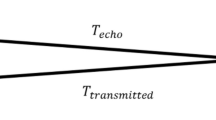Abstract
The design of an aperture operator is based on adequately constraining the spatial domain and the graylevel range in order to diminish the space of operators and, consequently, the estimation error. The design of a resolution constrained operator is based on adequately combining information from two or more different resolutions and has the same motivation, that is, diminish the space of operators to facilitate design. This paper joins these approaches and studies multiresolution design of aperture operators for grayscale images. Spatial resolution constraint, range resolution constraint and the combination of both constraints are characterized, and the error increase by using the constrained filter in place of the optimal unconstrained one is analyzed. Pyramidal multiresolution design involves applying the resolution constraint approach hierarchically, from the higher to the lower resolution space. These approaches are also characterized and their error increase analyzed. The system that has been implemented to design pyramidal multiresolution operators is described and has its complexity (memory and runtime) analyzed. Several simulations and two applications for deblurring are shown and compared to optimal linear filters. The results confirm the usefulness of the approach.
Similar content being viewed by others
References
E.R. Dougherty and J. Barrera. “Logical Image Operators,” in E. R. Dougherty and J.T. Astola, editors, Nonlinear Filters for Image Processing, pp. 1-60. SPIE and IEEE Press, Bellingham, 1999.
E.R. Dougherty and J. Barrera, “Computatinal Gray-Scale Operators,” in E.R. Dougherty and J.T. Astola, editors, Nonlinear Filters for Image Processing, pp. 61-98. SPIE and IEEE Press, Bellingham, 1999.
J. Barrera, E.R. Dougherty, and N.S. Tomita, “Automatic Programming of Binary Morphological Machines by Design of Statistically Optimal Operators in the Context of Computational Learning Theory,” Electronic Imaging, Vol. 6, No. 1, pp. 54-67, January 1997. Figure 28. Result from best multiresolution aperture. Hirata Jr., Brun, Barrera and Dougherty 220
E.R. Dougherty and R.P. Loce, “Optimal Mean-Absolute-Error Hit-or-Miss Filters: Morphological Representation and Estimation of the Binary Conditional Expectation,” Optical Engineering, Vol. 32, No. 4, pp. 815-827, April 1993.
E.R. Dougherty and R. P. Loce, “Precision of Morphological-Representation Estimators for Translation-invariant Binary Filters: Increasing and Nonincreasing,” Signal Processing, Vol. 40, pp. 129-154, 1994.
N.S.T. Hirata, E.R. Dougherty, and J. Barrera, “A Switching Algorithm for Design of Optimal Increasing Binary Filters Over Large Windows,” Pattern Recognition, Vol. 33, No. 6, pp. 1059-1081, June 2000.
R. Hirata Jr., E.R. Dougherty, and J. Barrera, “Aperture Filters,” Signal Processing, Vol. 80, No. 4, pp. 697-721, April 2000.
O.V. Sarca, E.R. Dougherty, and J. Astola, “Secondarily Constrained Boolean Filters,” Signal Processing, Vol. 71, No. 3, pp. 247-263, December 1998.
J. Barrera, E.R. Dougherty, and M. Brun, “Hybrid humanmachine binary morphological operator design. An independent constraint approach,” Signal Processing, Vol. 80, No. 8, pp. 1469-1487, August 2000.
E. R. Dougherty, J. Barrera, G. Mozelle, S. Kim, and M. Brun, “Multiresolution Analysis for Optimal Binary Filters,” Mathematical Imaging and Vision, Vol. 14, pp. 53-72, 2001.
O.V. Sarca, E.R. Dougherty, and J. Astola, “Two-stage Binary Filters,” Electronic Imaging, Vol. 8, No. 3, pp. 219-232, July 1999.
N.S.T. Hirata, E. R. Dougherty, and J. Barrera, “Iterative Design of Morphological Binary Image Operators,” Optical Engineering, Vol. 39, No. 12, pp. 3106-3123, December 2000.
E.R. Dougherty, “Optimal Mean-Square N-Observation Digital Morphological Filters I. Optimal Binary Filters,” CVGIP: Image Understanding, Vol. 55, No. 1, pp. 36-54, January 1992.
E.R. Dougherty, “Optimal Mean-Square N-Observation Digital Morphological Filters II. Optimal Gray-Scale Filters,” CVGIP: Image Understanding, Vol. 55, No. 1, pp. 55-72, January 1992.
R.P. Loce and E.R. Dougherty, “Optimal Morphological Restoration: The Morphological Filter Mean-Absolute-Error Theorem,” Visual Communication and Image Representation, Vol. 3, No. 4, pp. 412-432, December 1992.
R.P. Loce and E.R. Dougherty, “Facilitation of Optimal Binary Morphological Filter Design Via Structuring Element Libraries and Design Constraints,” Optical Engineering, Vol. 31, No. 5, pp. 1008-1025, May 1992.
R.P. Loce and E.R. Dougherty, “Mean-Absolute-Error representation and Optimization of Computational-Morphological Filters,” Graphical Models and Image Processing, Vol. 57, No. 1, pp. 27-37, 1995.
E.J. Coyle and J.-H. Lin, “Stack Filters and the Mean Absolute Error Criterion,” IEEE Transactions on Acoustics, Speech and Signal Processing, Vol. 36, No. 8, pp. 1244-1254, August 1988.
J.T. Astola and P. Kuosmanen, “Representation and optimization of stack filters,'' In E.R. Dougherty and J.T. Astola, editors, Nonlinear Filters for Image Processing, pp. 237-279. SPIE and IEEE Press, Bellingham, 1999.
M. Gabbouj and E.J. Coyle, “Minimum Mean Absolute Error Stack Filtering with Structural Constraints and Goals,” IEEE Transactions on Acoustics, Speech and Signal Processing, Vol. 38, No. 6, pp. 955-968, June 1990.
P. Kuosmanen and J.T. Astola, “Optimal stack filters under rank selection and structural constraints,” Signal Processing, Vol. 41, pp. 309-338, 1995.
I. Tabus, D. Petrescu, and M. Gabbouj, “A training Framework for Stack and Boolean Filtering-Fast Optimal Design Procedures and Robustness Case Study,” IEEE Transactions on Image Processing, Vol. 5, No. 6, pp. 809-826, June 1996.
H.J.A.M. Heijmans, Morphological Image Operators, Academic Press, Boston, 1994.
G.J.F. Banon and J. Barrera, “Minimal Representations for Translation-Invariant Set Mappings by Mathematical Morphology,” SIAM J. Applied Mathematics, Vol. 51, No. 6, pp. 1782-1798, December 1991.
G.J.F. Banon and J. Barrera, “Decomposition of Mappings between Complete Lattices by Mathematical Morphology, Part I. General Lattices,” Signal Processing, Vol. 30, pp. 299-327, 1993.
E.R. Dougherty, Random Processes for Image and Signal Processing, SPIE and IEEE Presses, Bellingham, 1999.
T.M. Mitchell. Machine Learning, “McGraw-Hill Series in Computer Science,” McGraw-Hill, March 1997.
M. Schmitt and F. Preteux, Image Analysis and Mathe-matical Morphology, Vol. P2, chapter Boolean texture analysis and synthesis, Ed. J. Serra, Academic Press, New York, 1988.
Author information
Authors and Affiliations
Rights and permissions
About this article
Cite this article
Hirata Junior, R., Brun, M., Barrera, J. et al. Multiresolution Design of Aperture Operators. Journal of Mathematical Imaging and Vision 16, 199–222 (2002). https://doi.org/10.1023/A:1020377610141
Issue Date:
DOI: https://doi.org/10.1023/A:1020377610141




